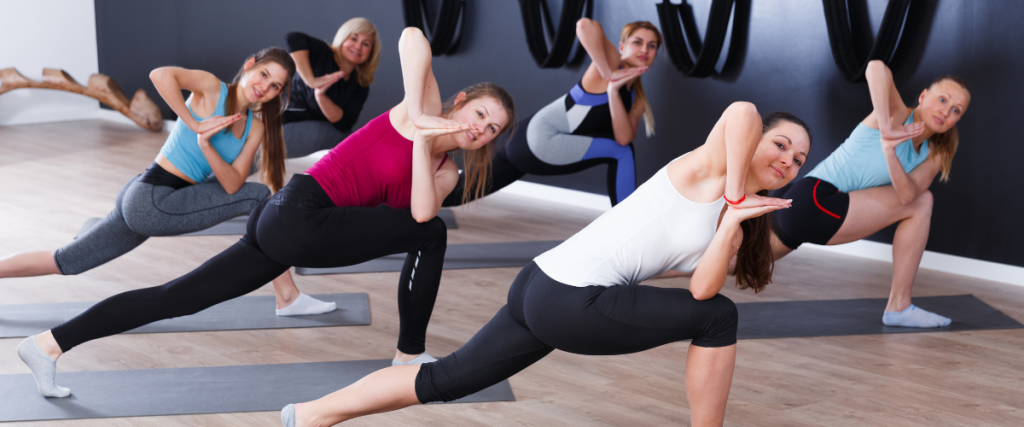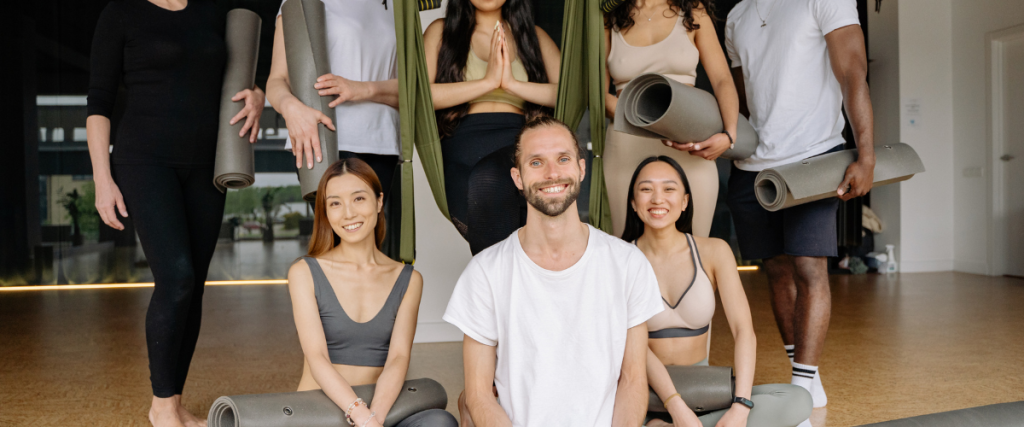
Yoga newbies or seasoned yogis typically join classes in yoga studios, gyms and fitness clubs. But with the emergence of more convenient options, plus the lockdowns forcing people to stay home, working out from home has become such a viable option. Here comes the dilemma: should you still join yoga classes or just DIY at your own house? Time to check and compare benefits!
At Home – In Your Own Time and Schedule
Joining yoga classes would entail you adhering to set class schedules. For those with packed or erratic daily schedules, it can be quite a hassle to look for a class that will match your free time.
Also, you will need to allot enough travel time to get to your class. That includes commute or driving distance from your work or house to the gym or yoga studio and the traffic conditions. A 1-hour yoga class can be a two to three-hour block on your calendar, including the travel time.
Some yoga studios or gyms might also be too strict regarding schedules. Late entry is not allowed, therefore your trip will be wasted or will delay your day even further with you joining the next class.

Doing yoga at home will let you do things on your own schedule. Want to squeeze in a quick 10-minute session before work? Just step into your yoga space, and that’s done! Had quite a long day and want a long meditation session? Just roll out your mat, and you’re good to go. Isn’t that absolutely convenient?
Minimal Cost
Practising yoga at home does not need gym subscriptions, per-session or packaged class and teacher rates. These fees can be quite hefty, especially in the long run.
You also would not need to spend on parking or gas or any possible expenses you incur whenever you leave your house to get to your class.
It may seem minimal, but the sum of these costs can actually be substantial. You can budget this money for more essential expenses or, better yet, for more savings.
If you are not confident in doing yoga without a teacher or coach, there are loads of free or low-cost teaching resources. There are books, articles, DVDs, online streaming or on-demand videos that you can use as step-by-step guides.
Your Space, Your Rules
You have total control of your preferences when at home. Do you want the area to be at a specific temperature, the lights to be brighter or dimmer or to choose the background music? You can absolutely do so! What you want is the only thing that matters.

If you are not a fan of other people looking at you or comparing yourself with others while practising yoga, that is not a problem. You can have friends or family over for a group session or do it all on your own. Who you do your yoga sessions with at your house is up to you!
Find your own pace and rhythm. There is no pressure to follow any class itinerary or a teacher’s specific yoga style. You can focus on breathing exercises for the day or just some meditation before you sleep, and that’s totally okay.
Build a routine while boosting your focus and determination
One of the benefits of doing yoga at home by yourself is establishing a routine that is the most convenient for you.
But that also entails dealing with distractions that will hinder you from getting into the zen state of mind. It will also let you give up whenever you encounter strenuous poses and remain at a physical difficulty level that is comfortable for you.
So by choosing this route, you also get to train to build your strength and resilience, and your mind to be highly determined and not lose focus!
In Studio – Instant Coaching and Feedback
Joining a yoga class means you will have an experienced yoga teacher who will guide you through the whole exercise.
If your form or alignment is incorrect, the teacher can immediately give you pointers to do the correct posture. This way, you lower the risks of injury and master yoga with guidance.
Having teachers is also convenient for beginners. Since they don’t have much idea about where or how to start their yoga experience, the teacher can guide them through the basics, the need-to-know and the must-avoid.
Community Support
Whether you are an introvert looking for some semblance of social interaction to get you out of the house or an extrovert spreading your wings as a social butterfly, forming a support group or forging deeper friendships with those you meet during classes is an immeasurable benefit.

Being with other people having the same goals and going through the same journey can serve as a motivation. If they can do it, you can do it as well!
Not as confident about what you are doing during the class? Imagine the power of having your own group of cheerleaders, who can be your supplementary guides or teachers as well, while you are struggling with difficult poses.
Who knows? Maybe your yoga group can be your next set of BFFs!
Fewer Things to Think About
Joining a class means having someone to lead you through every session. You can focus more on learning, relaxing and meditating. You have these studios specially designed and equipped for yoga classes. No need to worry about ventilation, sounds, lighting, or whatever it is you’ll need to set up when you do it at home.
And in the case that you forget your own yoga mat or other essentials, the studio might even have some for rent so you can proceed with the session. Just show up, let go and learn!
Final Thoughts
Choosing between doing yoga at home or joining a yoga class boils down to your priorities. If you want guided learning with group support, then it would be better to sign up at a yoga studio or fitness gym. But if you wish to have convenience, total control and save up, then doing yoga at home might be more practical for you. Whatever you choose, the only thing that matters is you roll out that mat and do it!
